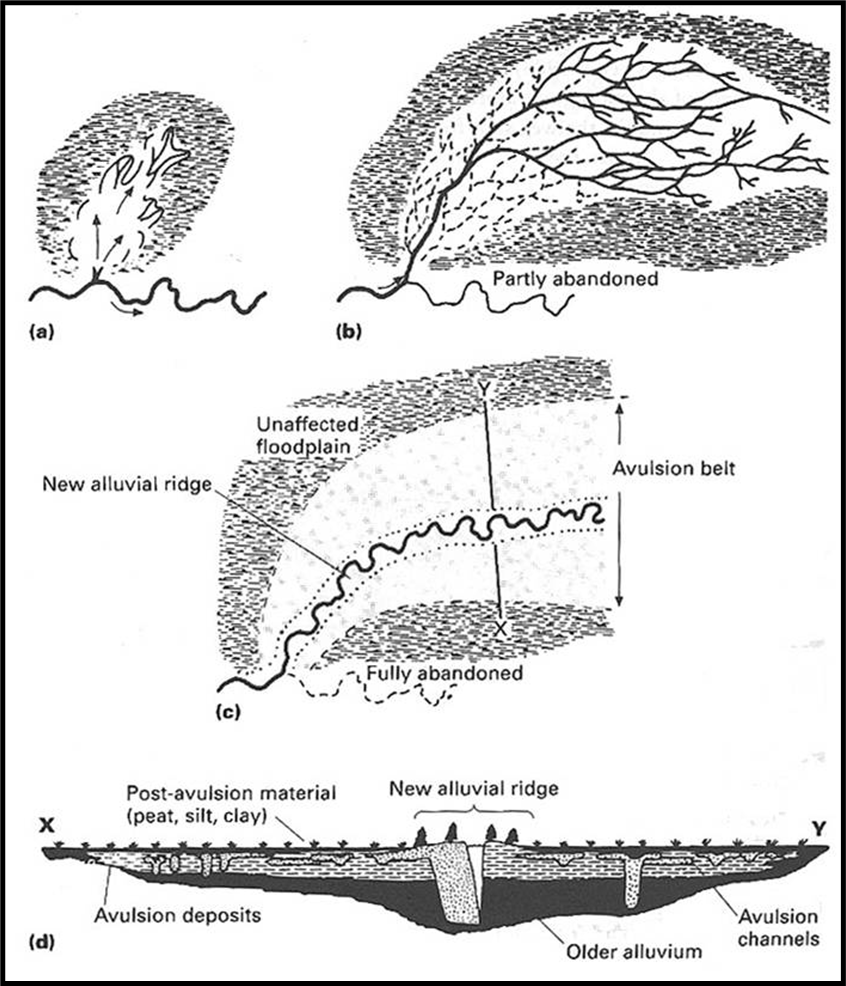6 - Continental Clastic Environments
1/19
There's no tags or description
Looks like no tags are added yet.
Name | Mastery | Learn | Test | Matching | Spaced |
|---|
No study sessions yet.
20 Terms
What is source to sink?
What it involves:
The complete sediment routing system
A holistic approach
Integration of multiple data sources
Focus on link between segments/ depositional environments
Link between processes and stratigraphy
Why is it useful:
Improve understanding of landscape and seascape evolution in 3D
Encourage thinking across disciplines
Improve predictability in ancient systems
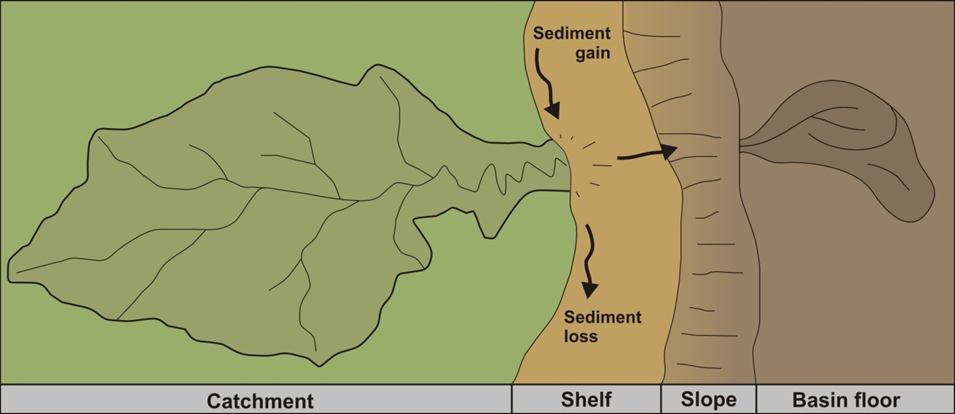
Define ‘river’, ‘fluvial’ and ‘alluvial’
River: a ‘large’ conduit for the flow of water and sediment
Fluvial: processes and bedforms relating to rivers
Alluvial: processes and deposits related to rivers but occuring outside of the channel itself (floodplains, deltas)
What are the key influences on fluvial sediment preservation?
To preserve non-marine strata into the rock record there needs to be net subsidence
Alluvial, fluvial, and megafans form a continuum of distributive bodies – issue using tributive systems
The distributive system builds radially through repeated channel avulsion events.
Palaeorivers classed as either perennial meandering or braided, but also ephemeral and ‘flashy’ types
Fluvial overbank is an important component: palaeoenvironmental record
How is sediment transported in river?
Three modes:
Dissolved load/wash load (ions in solution - pollution)
Suspended load
Fine particles (sand, silt & clay)
Turbulent eddies pick up, carry upward if vel. > settling vel.
Bedload
On/near bed; rolling, bouncing (‘saltating’), etc.
Suspended and bedload transport increase rapidly with flow strength (nonlinear relationship)
What are the two main kinds of rivers?
Bedrock rivers; part of the bed is bare rock, which the river has eroded into cutting down
Generally in upper reaches of rivers
Erosion rate depends on slope
Presence of sediment (‘tools’) increases erosion

Alluvial rivers; bed consists of sediment (‘alluvium’ = river-associated sediment)
Downstream reaches
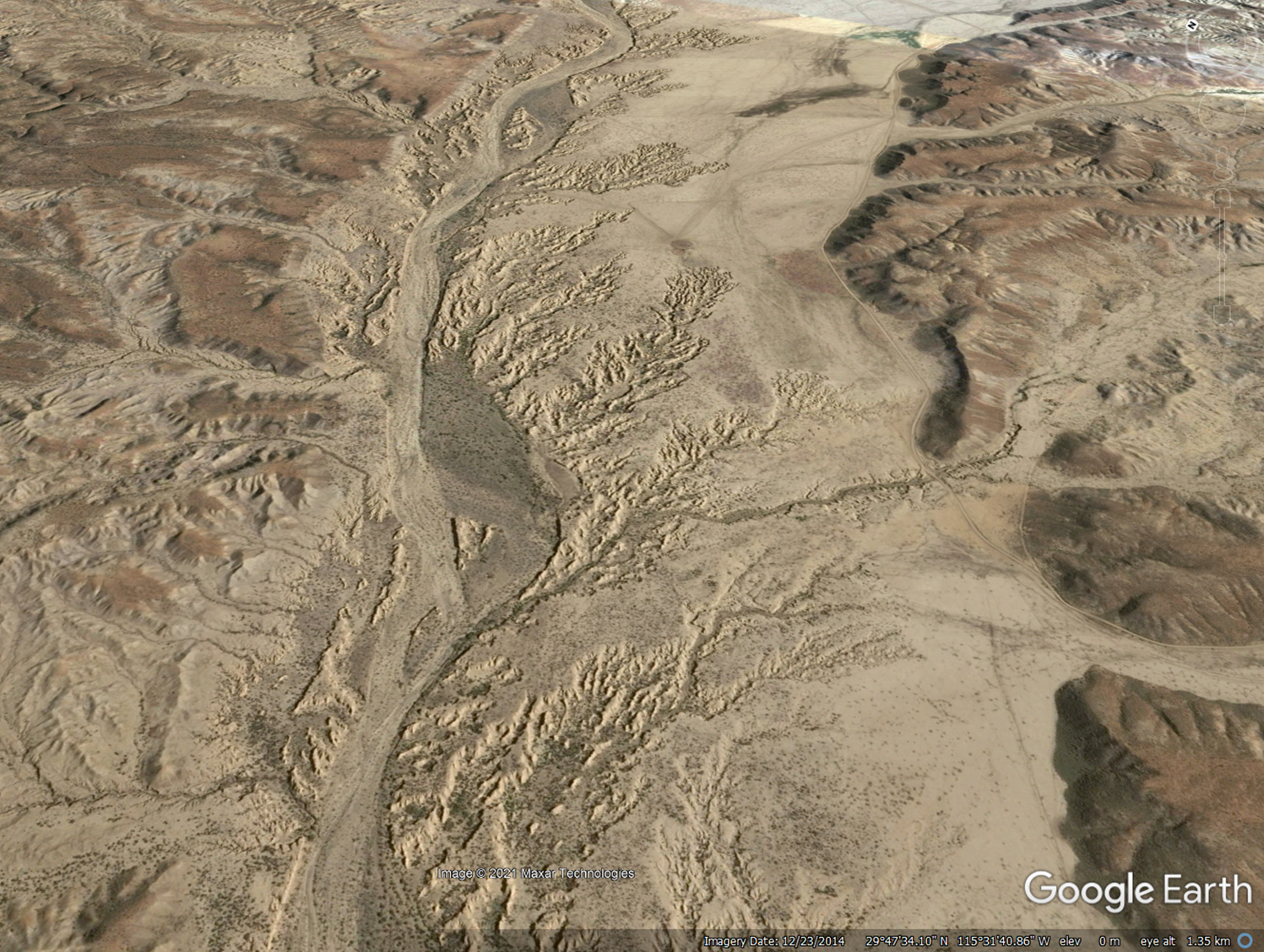
What are alluvial fan depositional systems?
Form at exit of drainage basin
Mix of sediment processes
Debris flows
Hyperconcentrated flows
Fluvial channels
Sheet floods
Lobe-switching process produces composite cone
Radial sediment dispersal pattern
Decreasing grain size and gradient downslope
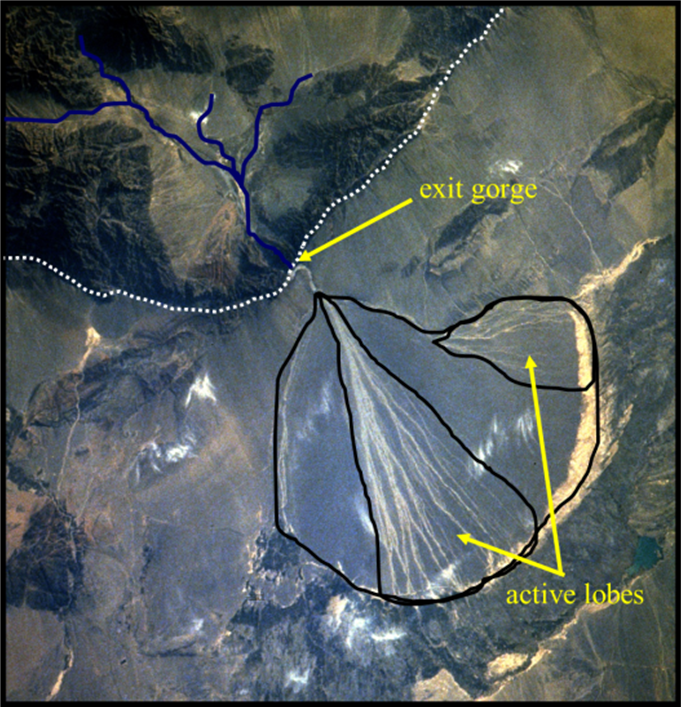
What are the alluvial fan end member types?
Debris-flow dominated alluvial fan:
Small and steep catchments. High magnitude/low frequency events. Common debrite lobe features
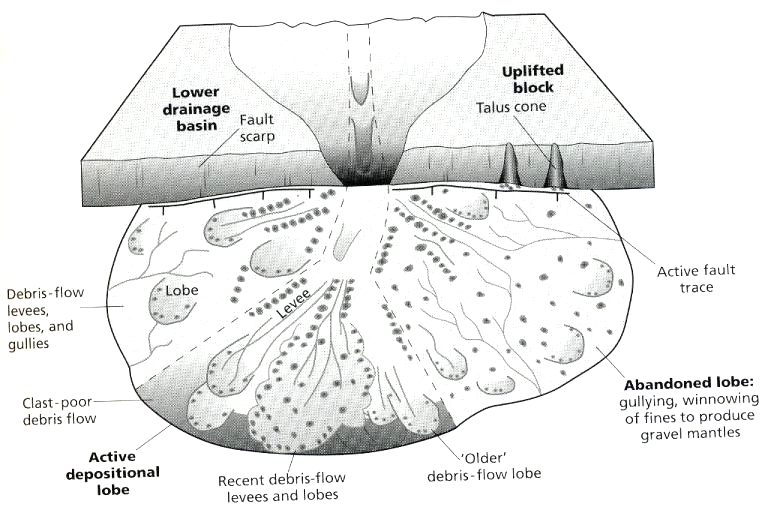
Stream-flow dominated alluvial fan:
‘Wet’ fan that receive annual rains. Avulsion and migration of rivers dominate. Soil development
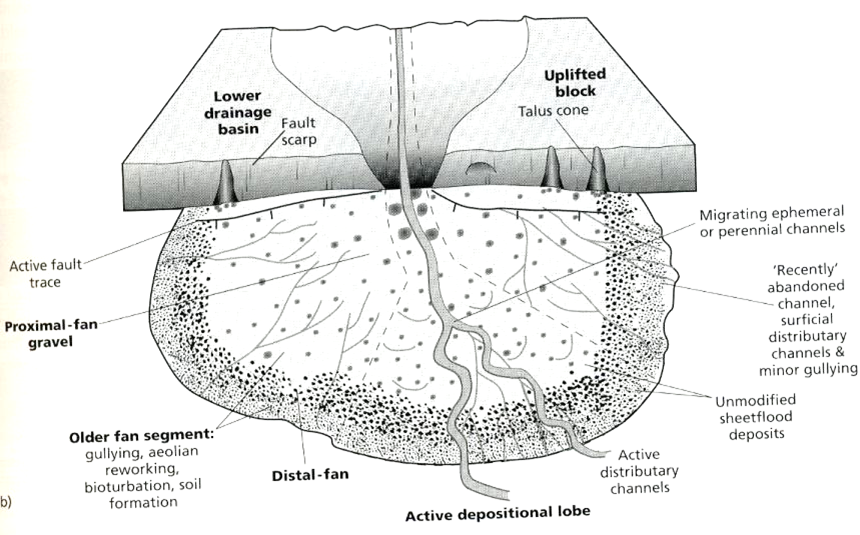
What are the recognition criteria for ancient alluvial fans?
Ancient fan deposits located adjacent to, and tilt towards, normal faults at basin margins
Upward changes in grain-size and facies reflect cycles of growth/shrinkage (allogenic) and/or lobe switching (autogenic)
Absence of marine fauna & immature texture
Evidence of subaerial emergence: palaeosols and desiccation cracks
Unidirectional to radial palaeocurrents
Nature of fan considered based on facies: stream- vs. debris-flow
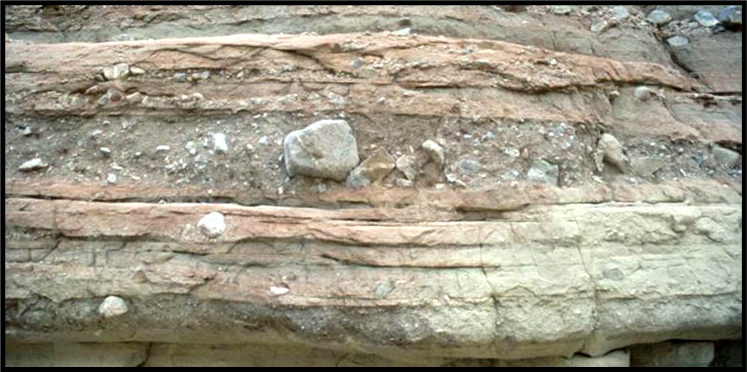
What are the main types of (perennial) fluvial channel (in planform)?
Straight
Braided
Degree of channel subdivision by large migrating bedforms
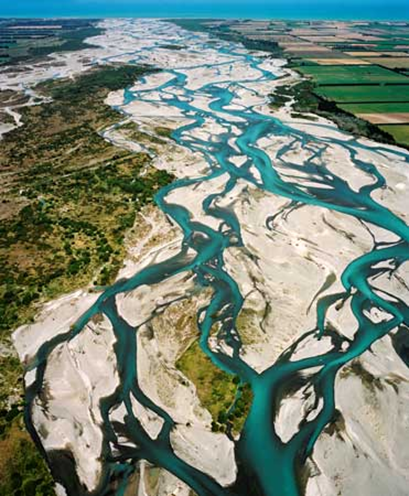
Meandering
Planform description of channel deviation from straight
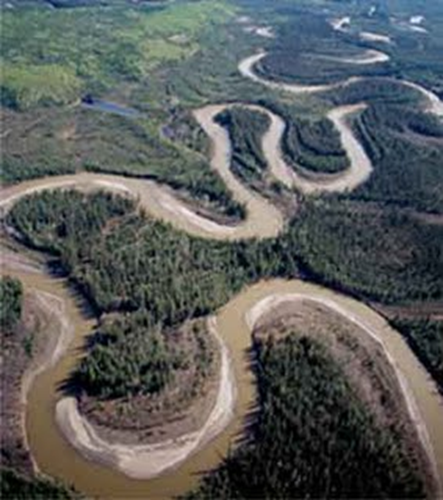
Anastomosing
More permanent distributive channel subdivision into smaller channels
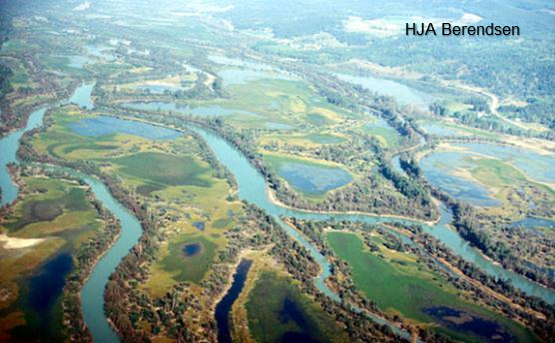
What are the recognition criteria for ancient fluvial deposits?
Deposits usually of relatively low textural and compositional maturity
erosive-based coarse grained facies associations (palaeochannel belts) dominated by tractional, current-produced sedimentary structures with unidirectional palaeocurrent patterns
fine grained facies associations (overbank: levee and floodplain deposits) include evidence of emergence
Marine fauna are lacking, but freshwater body and trace fossils may be present
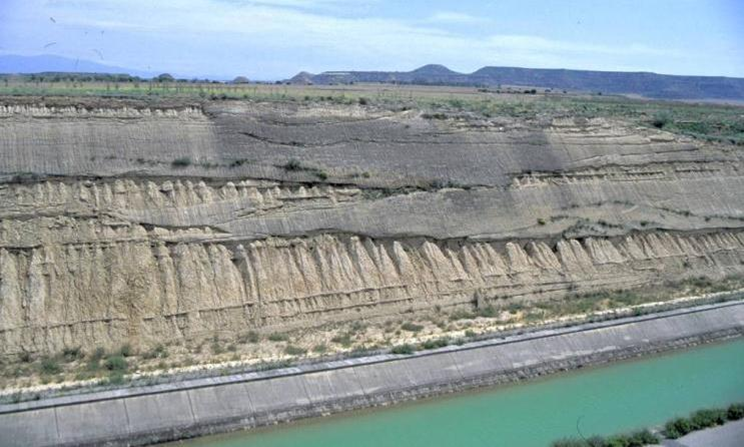
What are features of meandering river?
Sinuous = shape, meandering = process
Influences on sinuous river channels
Sediment load: mixed load
Channel slope: rel. low gradient
Bank cohesion
External forcing
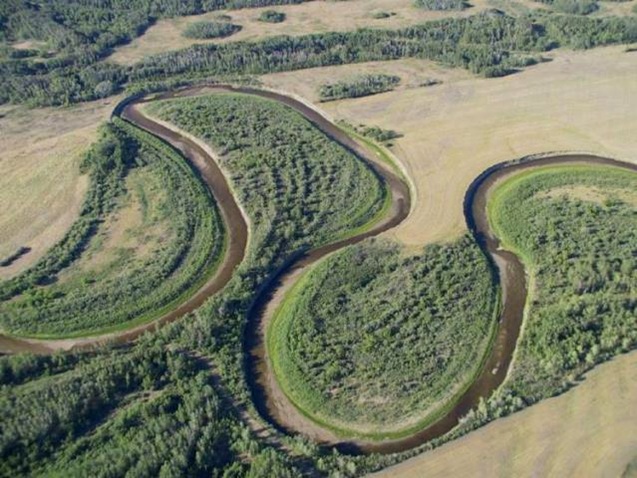
Causes of meandering: secondary helical flow
Secondary flow cells
Spiral flow (helical cells)
Outward at the surface, inward at the bed
Erosion on outside of bends
Deposition on inside of bends
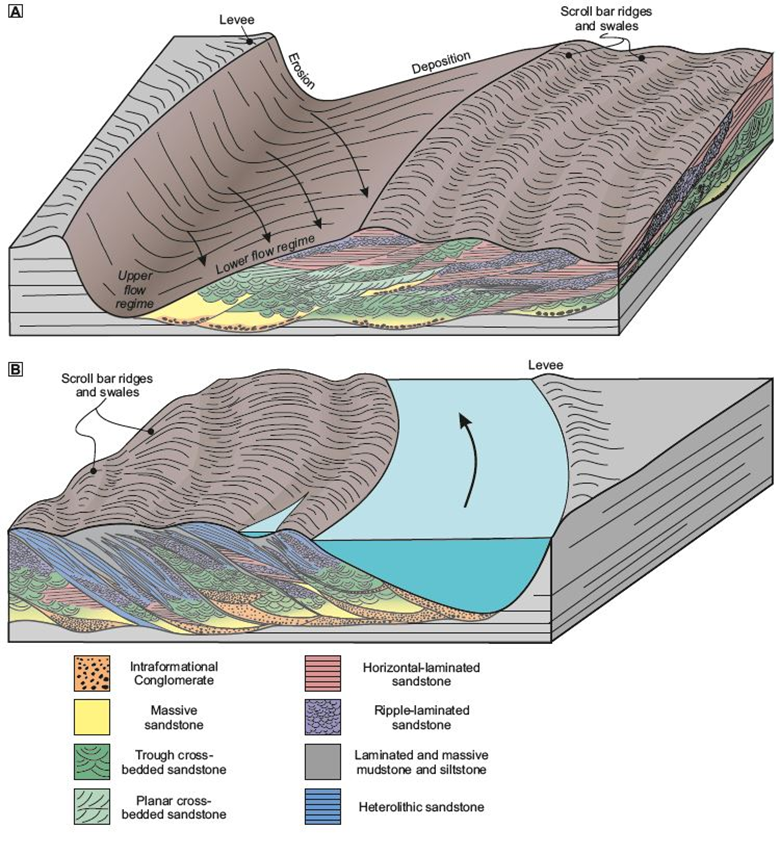
Distinctive facies characteristics
Fining-upward patterns
Lateral accretion surfaces
Mix of channel and overbank deposits
What are depositional features of meandering river?
Lateral accretion surfaces:
Main deposition in meandering fluvial channels is point bar on the inner bend
Migration of the point bar is lateral with a downstream component
Fining-up, and > 1 m thick, with inclined bedding (5-15°)
Small-scale structures on inclined beds indicating orthogonal flow
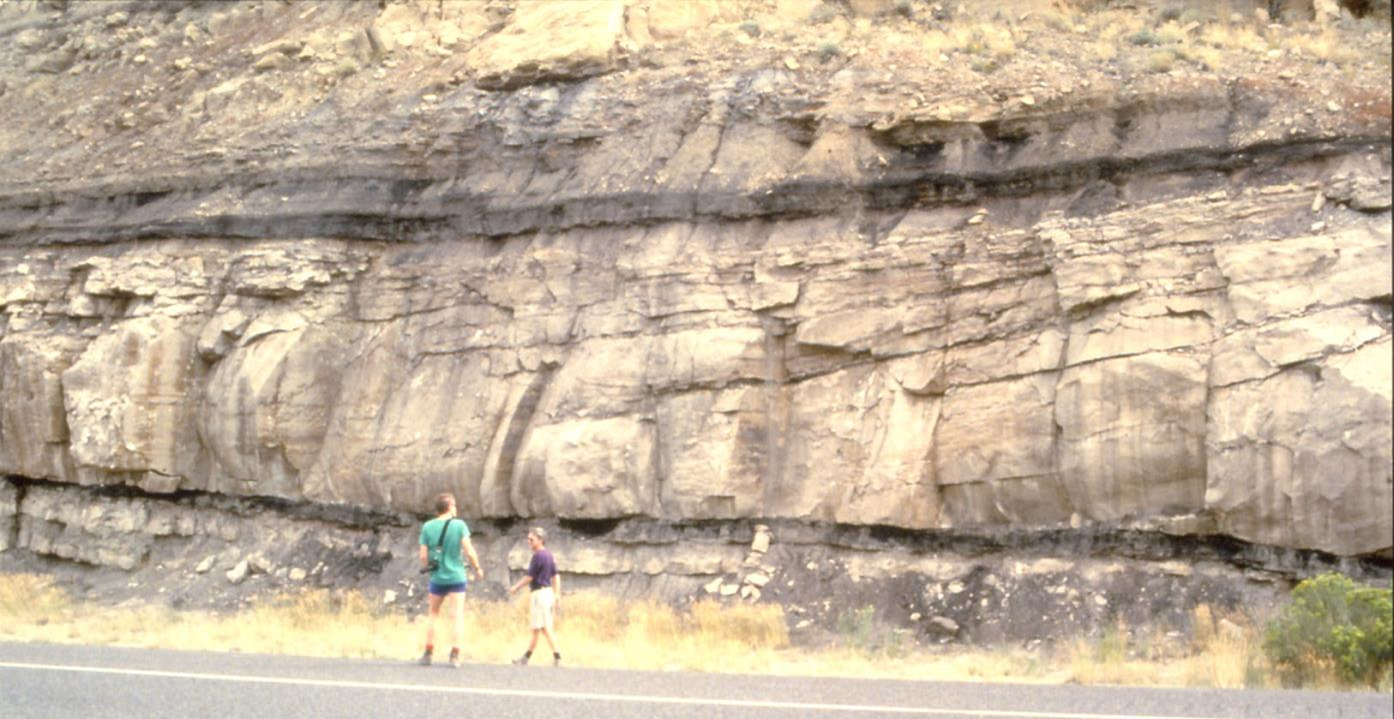
Scroll bars: record bend migration in a lateral and downstream direction
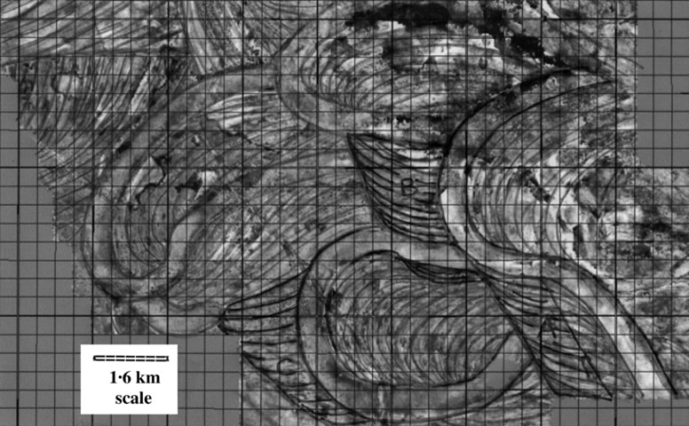
What are the facies models for meandering river?
In-channel facies
Channel bed lags
Lateral accretion units
Fining upwards
Abandoned channels
Floodplain facies
Levees (a few metres)
Overbank silts, peats/coals
Crevasse-splay deposits
Palaeosols
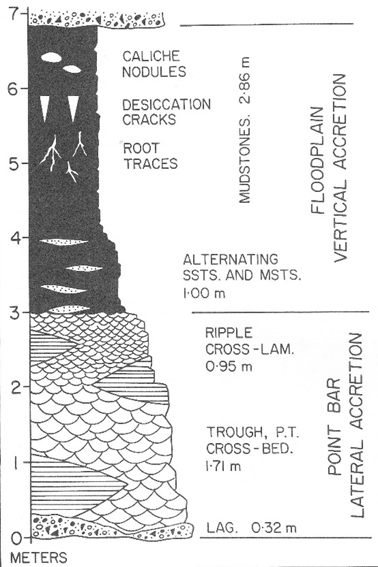
What are the recognition criteria for high sinuosity, meandering palaeochannels?
Low relief basal erosion surfaces – migration leads to channel belts
Tractional structures that record a systematic reduction in flow velocity upwards or laterally through the channel fill: lateral accretion surface
Relatively high preservation of fine-grained overbank facies
Sheet-like channel sandstone bodies with relatively low width: depth
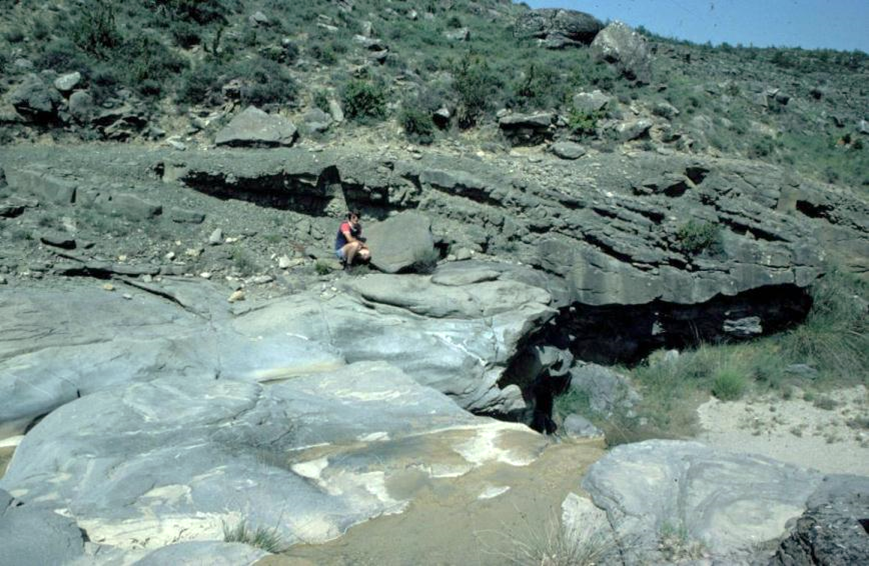
What are the features of braided rivers
Complex multichannel systems of low sinuosity
Bedload-dominated
Gravel or sand
High gradient
Dynamic and rapidly changing
Origins of braiding
Variable discharge (seasonal)
Slope/discharge & grain-size
Sediment supply
Bank erosion
High width: depth ratio
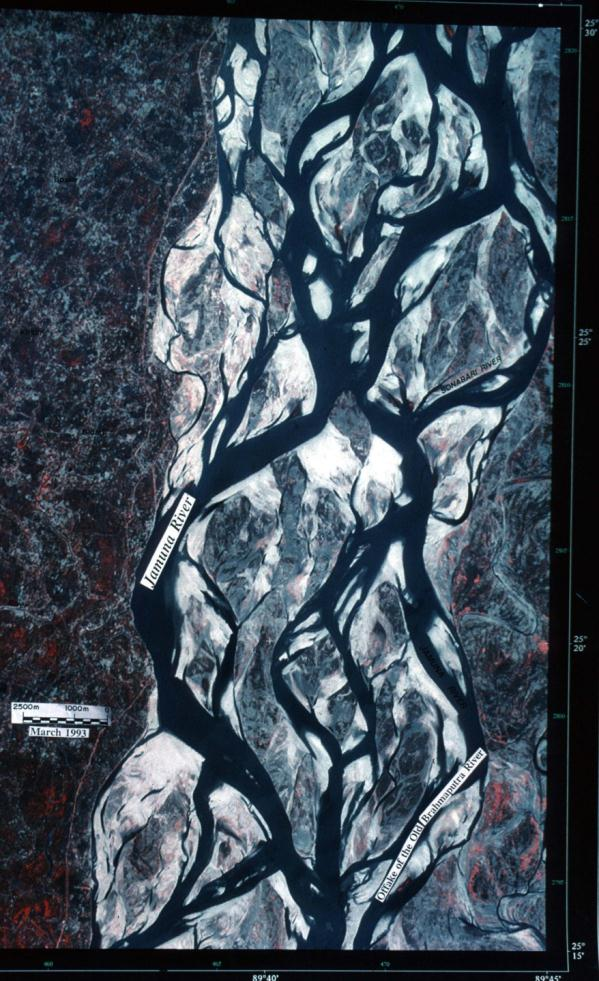
Describe channel/point bar formation/migration
Flow convergence causes scour
Flow divergence causes deposition
Bar growth
Dune amalgamation
Lateral Accretion
Causes flow deflection
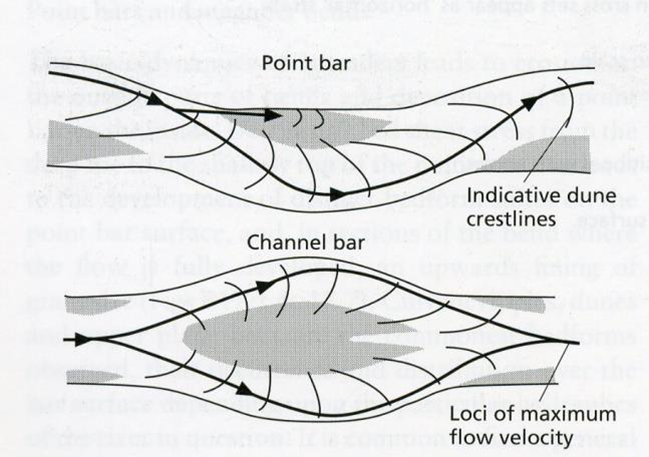
Bars grow and migrate at high stage
Dissected and reworked at low stage
Dominated by cross-beds

How are (sandy) braided river dynamics recorded in stratigraphy?
Braid bars migrate downstream whilst sub-channels shift laterally: Downstream accretion
Deepest channels produce composite basal master erosion surface
Remnants of braid bars and channel-fills are preserved between the internal erosion surfaces
Braided rivers tend to sweep laterally with time, unless they are confined within valleys, to form multistorey channel belts (sheets)
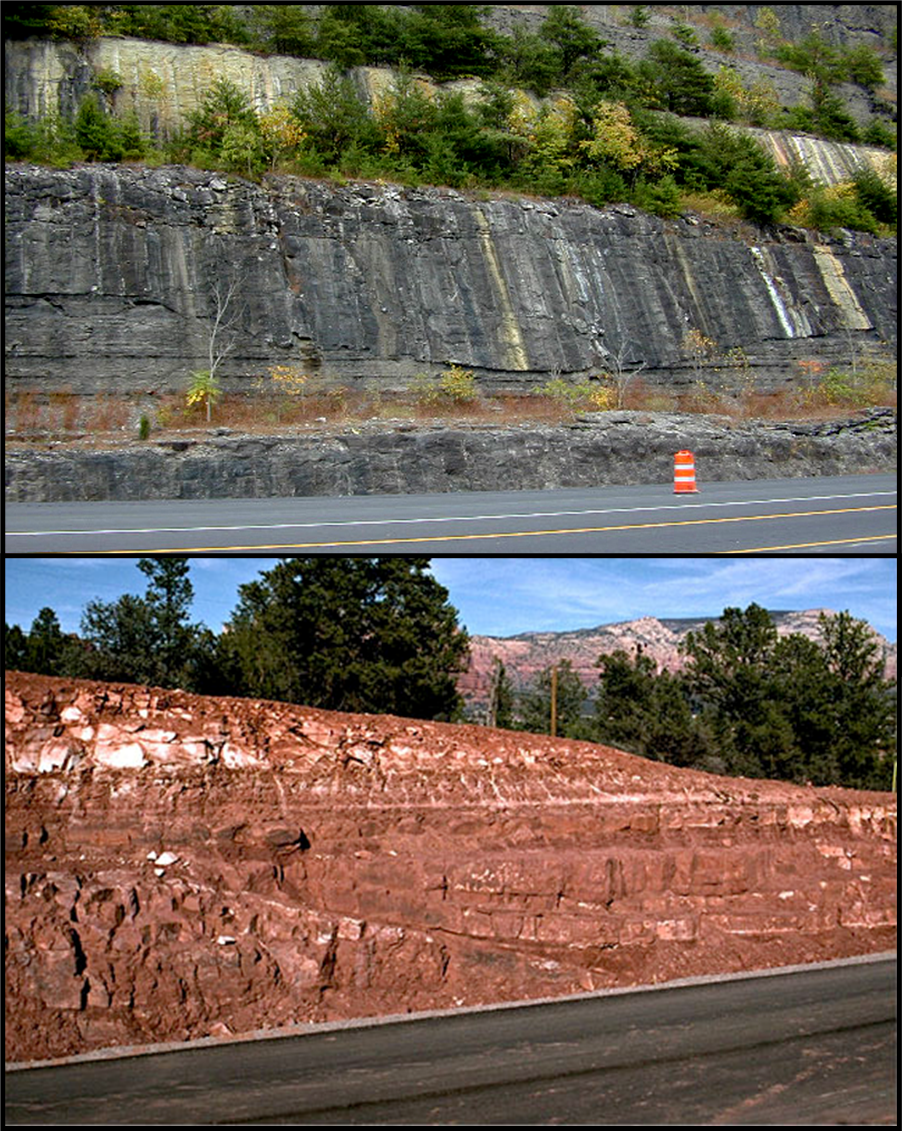
What are the criteria for recognition of low sinuosity, braided rivers?
High relief, composite erosion surfaces resulting in sheet-like channel belts
Widespread planar and trough cross bedding, commonly coarse-grained
Palaeocurrent variance between high and low discharge periods
Low preservation of fine-grained overbank facies: lateral mobility of channels
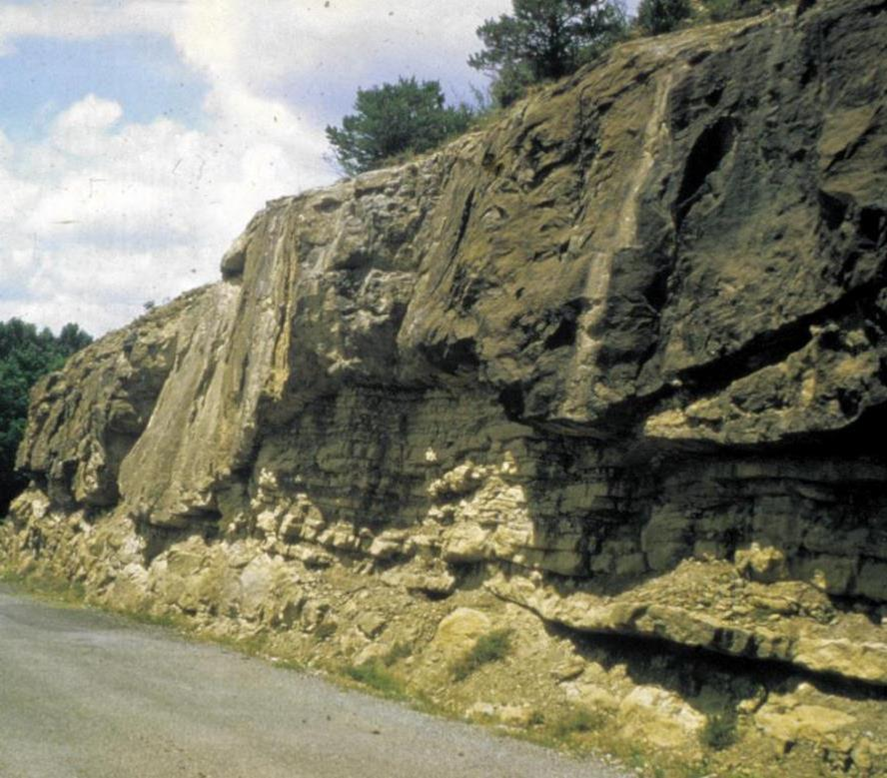
What are the sedimentary features of floodplains?
Levees: low relief, fine and thin away
Overbank fines: sediment storage
Palaeosols: climate, organic traps, roots
Crevasse splay deposits
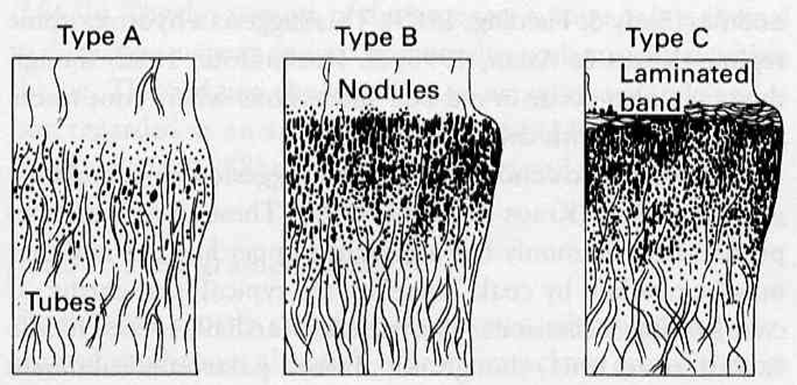
What are the effects of channel crevasse and avulsion?
Crevasse channel and splay – thinner than parent channel
Crevasse deposits: evidence of rapid deposition
Impact downstream on delta lobes
